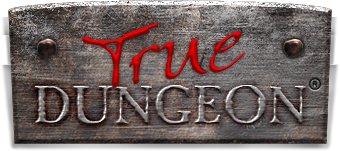|
Welcome,
Guest
|
In 2013 our plans call for us to add an additional adventure to the event. There will be two consecutive adventure modules, and each module will have two variations of either a combat or puzzle orientation. The first module called “Lycans Afoot” tasks the party to travel through a dark forest in search of a tower, while the second module called “Golembane” challenges the party to reach the top of tower.
|
TOPIC: 2 more newbie questions...
Re: 2 more newbie questions... 10 years 9 months ago #13
|
Please Log in or Create an account to join the conversation. |
Re: 2 more newbie questions... 10 years 9 months ago #14
|
|
Please Log in or Create an account to join the conversation. |
Re: 2 more newbie questions... 10 years 9 months ago #15
|
|
Please Log in or Create an account to join the conversation. |
Re: 2 more newbie questions... 10 years 9 months ago #16
|
Please Log in or Create an account to join the conversation. |
Re: 2 more newbie questions... 10 years 9 months ago #17
|
Please Log in or Create an account to join the conversation. |
|
Time to create page: 0.087 seconds





